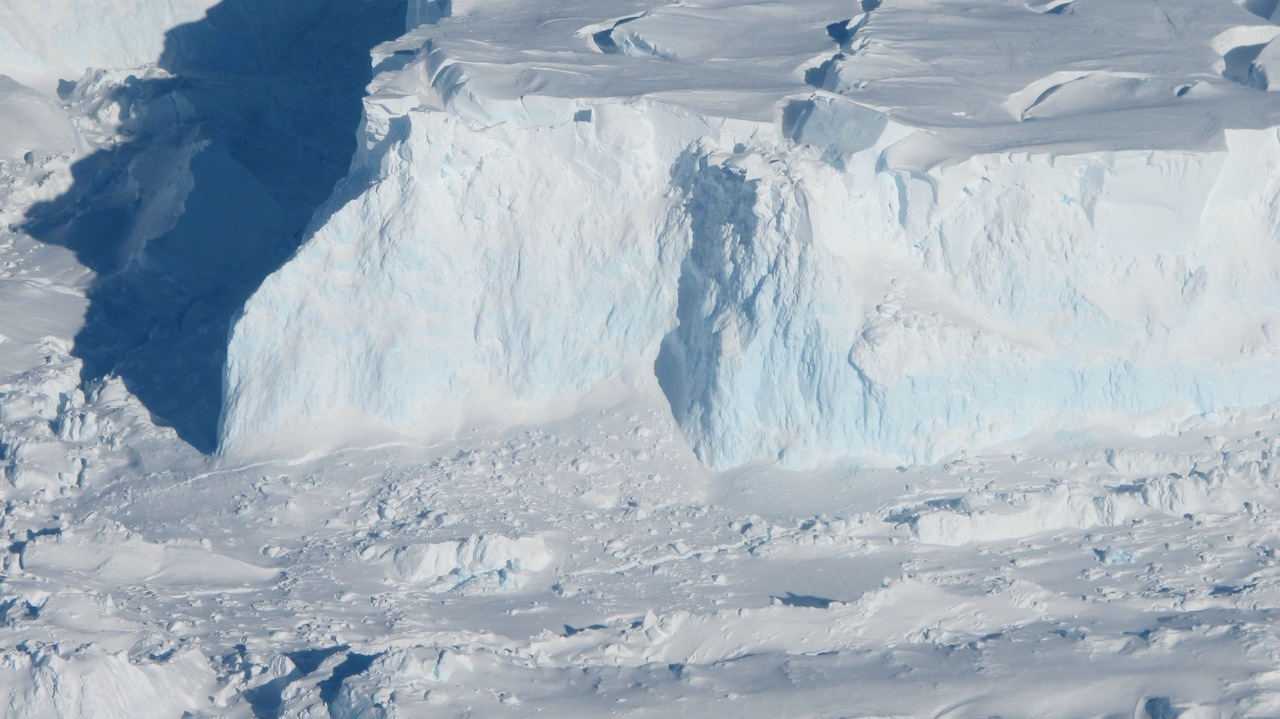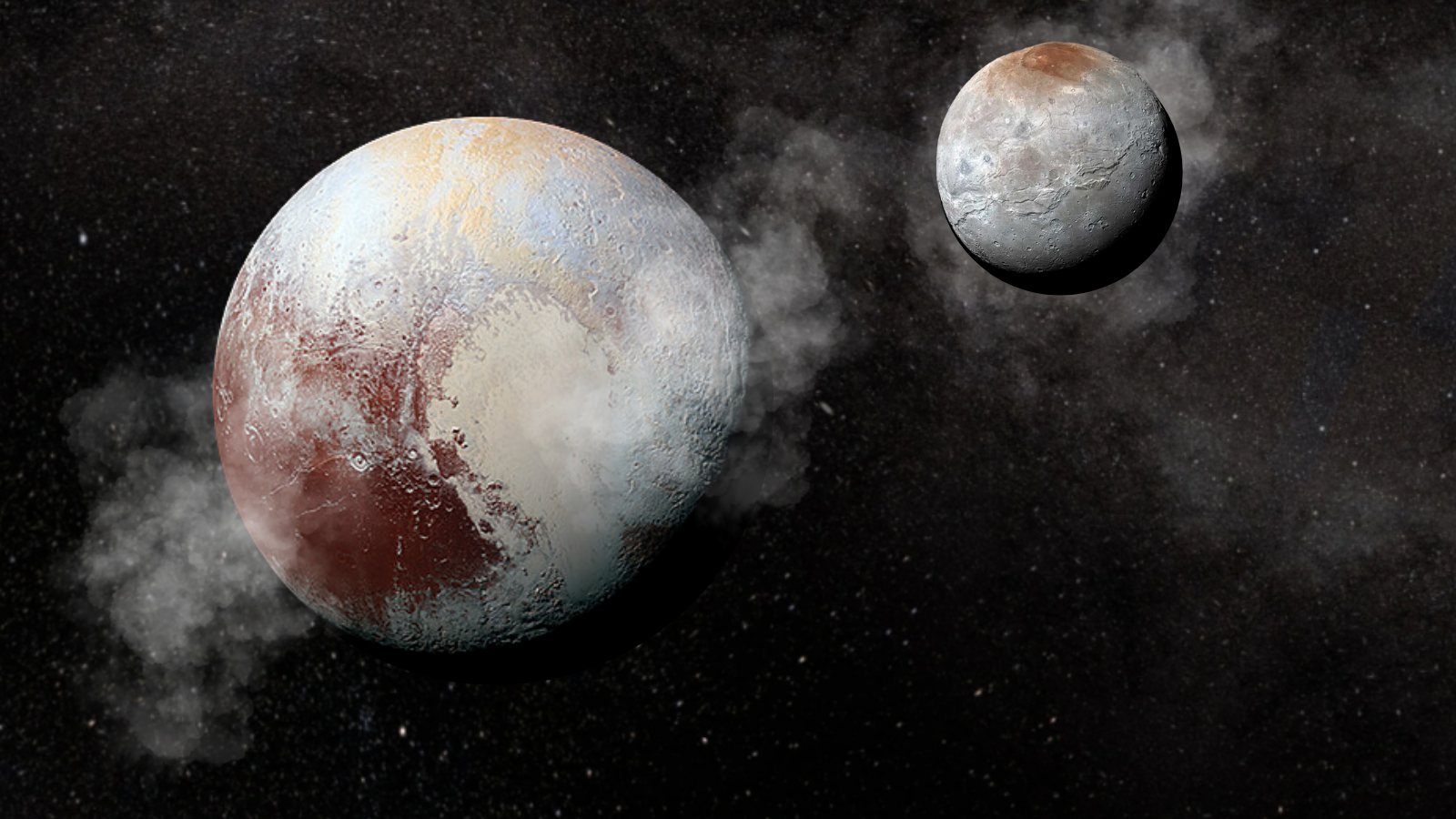Satellite data reveals Antarctica's Thwaites Glacier is melting faster than we thought
Seawater rushing miles beneath the glacier makes the ice more vulnerable to melting.

Antarctica's Thwaites Glacier is melting fast; this much, scientists already know. However, according to a new study, it's melting faster than we thought — and that spells trouble for sea-level-rise projections.
Using observations from the ICEYE Synthetic Aperture Radar (SAR) satellite constellation, a joint project between the U.S. and Finland, researchers have taken a detailed look beneath the Thwaites Glacier for the first time, specifically at an area called the grounding line. This is where a tidewater glacier (that is, one that flows into the ocean) transitions from being anchored to land to floating on the sea. Here, physical processes contribute to a tidewater glacier's ice mass loss, which is why it's crucial to study this boundary.
The researchers discovered that the grounding line wasn't an abrupt transition as expected. Instead, Thwaites Glacier has a tidally controlled grounding zone stretching between 1.2 and 3.7 miles (2 kilometers to 6 kilometers) wide, with warm seawater intrusions reaching a further 3.7 miles (6 km) inland during spring tide. This widespread contact between relatively warm seawater and the glacier "will induce vigorous melt of grounded ice over kilometers, making the glacier more vulnerable to ocean warming," according to the study, published this week in the journal Proceedings of the National Academy of Sciences. And that means it's melting faster than our current models have predicted.
Related: Doomsday Glacier melting in Antarctica means terrible news for global sea level rise
"Until now, some of the most dynamic processes in nature have been impossible to observe with sufficient detail or frequency to allow us to understand and model them," ICEYE Director of Analytics Michael Wollersheim said in a statement. "Observing these processes from space and using radar satellite images, which provide centimeter-level precision InSAR measurements at daily frequency, marks a significant leap forward."
This research at Thwaites Glacier provides scientists the opportunity to revise their models to create a more accurate prediction of glacial melt — and therefore global sea level rise — around the world. “If we put this type of ocean-ice interaction into ice sheet models, I expect we will be able to do a much better job of reproducing what has happened in the past quarter century, which will lead to a higher level of confidence in our projections,” said Eric Rignot, a UC Irvine professor of Earth system science and senior project scientist at NASA’s Jet Propulsion Laboratory.
Unfortunately, those projections will likely become more dire. Thwaites Glacier is commonly referred to as the "doomsday glacier" for its potential impact on sea level rise — it's the most unstable glacier in Antarctica, and its ice mass loss could add two feet (60 centimeters) to current sea levels.
Get the Space.com Newsletter
Breaking space news, the latest updates on rocket launches, skywatching events and more!
"At the moment we don't have enough information to say one way or the other how much time there is before the oceanwater intrusion is irreversible," said Christine Dow, professor in the Faculty of Environment at the University of Waterloo in Ontario. "By improving the models and focusing our research on these critical glaciers, we will try to get these numbers at least pinned down for decades versus centuries."
Join our Space Forums to keep talking space on the latest missions, night sky and more! And if you have a news tip, correction or comment, let us know at: community@space.com.

Space.com contributing writer Stefanie Waldek is a self-taught space nerd and aviation geek who is passionate about all things spaceflight and astronomy. With a background in travel and design journalism, as well as a Bachelor of Arts degree from New York University, she specializes in the budding space tourism industry and Earth-based astrotourism. In her free time, you can find her watching rocket launches or looking up at the stars, wondering what is out there. Learn more about her work at www.stefaniewaldek.com.
